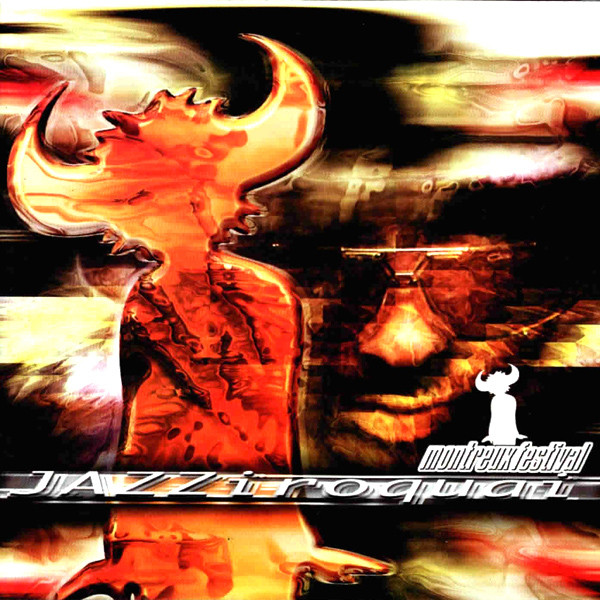1,870 Matching Annotations
- Sep 2023
-
soundcloud.com soundcloud.com
-
docdrop.org docdrop.org
-
Melodic composition
-
-
soundcloud.com soundcloud.com
-
podcast.ausha.co podcast.ausha.co
-
soundcloud.com soundcloud.com
- Aug 2023
-
www.independent.co.uk www.independent.co.uk
-
Cuthbertson, Anthony. “Musician Uses Algorithm to Generate Every Possible Melody to Prevent Copyright Lawsuits.” The Independent, February 28, 2020, sec. Tech. https://www.independent.co.uk/tech/music-copyright-algorithm-lawsuit-damien-riehl-a9364536.html.
-
Working with programmer Noah Rubin, Damien Riehl built software capable of generating 300,000 melodies each second, creating a catalogue of 68 billion 8-note melodies.
-
-
soundcloud.com soundcloud.com
-
moochinaboutltd.bandcamp.com moochinaboutltd.bandcamp.com
-
moochinaboutltd.bandcamp.com moochinaboutltd.bandcamp.com
-
www.mixcloud.com www.mixcloud.com
-
soundcloud.com soundcloud.com
Tags
Annotators
URL
-
-
audiusproject.github.io audiusproject.github.io
Tags
Annotators
URL
-
-
odesli.co odesli.co
-
-
soundcloud.com soundcloud.com
-
bonpote.com bonpote.com
-
For largely financial reasons, the intensity of bookings is increasing (the number of artists scheduled to perform per year, per season, etc.) and the bookings themselves are growing more and more extensive (the kilometres/miles travelled by artists continue to rise with fewer and fewer performance dates in each region)
- for: music industry - touring economics, concert booking arms race, unsustainable booking
- the intensity of bookings ( number of artists scheduled to perform per year or per season) is increasing
- the average booking is becoming more geographically widespread ( more kilometers travelled per artist) with fewer performance dates per region
- increase in artistic fees and technical requirements force organizers to attract more audiences who come from further away, creating a concert booking arms race
- for: music industry - touring economics, concert booking arms race, unsustainable booking
-
artists are complicit in
- for: carbon emissions of the 1%, carbon inequality, carbon emissions - artists, high carbon lifestyle
- comment
- top tier entertainers are conditioned to a high carbon lifestyle. This is a challenge to overcome.
- example given
- DJ who flew to perform in four different EU cities in the same evening!
-
Most renowned artists and the trades and professions around them (producers, broadcasters, booking agents, distributors, internet platforms…) are today dependent on hyper-intensive energy-consuming models.
- for: carbon footprint - music industry, carbon footprint - concerts, carbon footprint - touring
- paraphrase
- Most renowned artists and the trades and professions around them
- producers,
- broadcasters,
- booking agents,
- distributors, internet platforms
- studios
- equipment and service providers
- are today dependent on hyper-intensive energy-consuming models.
- Music or showbusiness artists, for example, depend more and more on touring and festivals.
- Namely because with a remuneration of 0,0034 dollars per listened music track,
- only 1% of music artists receive a minimum wage through streaming and
- because, in the meantime, sales in the physical media market (CD, vinyl) have collapsed,
- and streaming has not made up for loss of value.
- Unsurprisingly, the artists who are most successful at making a living receive the quasi-totality of their revenue from the tours they do via concerts or festivals
- (which incur high travel carbon footprint)
- And those have a tendency to increase at an unchecked rate.
- To attract the largest crowd possible, these artists demand
- more and more top billings
- with equally
- increasing fees and
- technical requirements.
- example
- Coldplay travels with no less than 2 kits of 32 articulated lorries on the road (for their “ecological” tour),
- Rammstein accounts for
- almost 100 articulated lorries
- 7 cargo planes for their tours and
- burns no less than 1000 litres of heating oil for their pyrotechnical effects at each concert (something the group proudly displays on social media).
- Most renowned artists and the trades and professions around them
- noteworthy
- due to loss of product sales, touring and concerts is the only way musicians can make money, and that comes at high carbon emission cost
Tags
- carbon footprint - concerts
- carbon emissions - culture
- unsustainable booking
- carbon emissions - DJ
- carbon emissions - music industry
- carbon footprint - music industry
- music industry - touring economics
- carbon emissions - cultural sector
- high carbon lifestyle
- concert booking arms race
- carbon footprint - touring
Annotators
URL
-
-
cleanscene.club cleanscene.club
-
- for: carbon emissions - DJ, carbon footprint - DJ, carbon emissions - music industry, carbon emission - cultural sector, research study - carbon emissions - DJ
- noteworthy
- some DJ's fly to perform in four European cities in a single evening!
-
-
soundcloud.com soundcloud.com
-
soundcloud.com soundcloud.com
-
soundcloud.com soundcloud.com
-
bilge.world bilge.world
-
Please note that this was written long before Epic Game's acquisition of Bandcamp, which you can read more about in Pitchfork, The New York Times and/or Bandcamp's own blog post.
Tags
Annotators
URL
-
-
soundcloud.com soundcloud.com
- Jul 2023
-
soundcloud.com soundcloud.com
-
-
www.youtube.com www.youtube.com
-
www.youtube.com www.youtube.com
-
www.youtube.com www.youtube.comYouTube6
-
https://www.youtube.com/watch?v=b1_RKu-ESCY
Lots of controversy over this music video this past week or so.
In addition to some of the double entendre meanings of "we take care of our own", I'm most appalled about the tacit support of the mythology that small towns are "good" and large cities are "bad" (or otherwise scary, crime-ridden, or dangerous).
What are the crime statistics per capita about the safety of small versus large?
Availability bias of violence and crime in the big cities are overly sampled by most media (newspapers, radio, and television). This video plays heavily into this bias.
There's also an opposing availability bias going on with respect to the positive aspects of small communities "taking care of their own" when in general, from an institutional perspective small towns are patently not taking care of each other or when they do its very selective and/or in-crowd based rather than across the board.
Note also that all the news clips and chyrons are from Fox News in this piece.
Alternately where are the musicians singing about and focusing on the positive aspects of cities and their cultures.
-
-
-
-
-
Tags
- musicbrainz:release=05de8b57-0ea2-47ca-a1ff-52d1404ebaf1
- Jason Aldean
- fear mongering
- musicbrainz:release=3d10c269-c0f9-4e9e-8b1c-1007b1c2ac40
- country music
- musicbrainz:series=87fbcf98-7ce7-4211-a152-2892d9e1cb9c
- musicbrainz:series=28f1d8de-4d24-4989-98c7-0fd223a620bf
- music videos
- myth of big city-based violence
- safety nets
- nu jazz
- bart&baker
- cognitive bias
- two Americas
- musicbrainz:release=145ab4e5-83e4-4504-9951-f219c91ec60c
- swing
- musicbrainz:series=bda50a36-9aa0-4726-a04a-964ccfed1140
- inner-cities
- cultural divide
- stephane pompougnac
- electro
- musicbrainz:release=579f8a38-dc43-442c-add8-d6fefc7aea3c
- musicbrainz:release=db64a1d7-8cf6-4ff3-b53b-b8a2cbfd7d2a
- availability heuristic
- verve
- mix
- hotel costes
- watch
- house
- remix
- music
- Try That In a Small Town
Annotators
URL
-
-
moochinaboutltd.bandcamp.com moochinaboutltd.bandcamp.com
-
soundcloud.com soundcloud.com
-
soundcloud.com soundcloud.com
-
soundcloud.com soundcloud.com
-
jperiod.bandcamp.com jperiod.bandcamp.com
-
jperiod.bandcamp.com jperiod.bandcamp.com
-
soundcloud.com soundcloud.com
-
soundcloud.com soundcloud.com
-
www.youtube.com www.youtube.com
-
remembersthe90s.bandcamp.com remembersthe90s.bandcamp.com
-
remembersthe90s.bandcamp.com remembersthe90s.bandcamp.com
-
remembersthe90s.bandcamp.com remembersthe90s.bandcamp.com
-
remembersthe90s.bandcamp.com remembersthe90s.bandcamp.com
-
remembersthe90s.bandcamp.com remembersthe90s.bandcamp.com
-
deepfriedmusic.bandcamp.com deepfriedmusic.bandcamp.com
-
soundcloud.com soundcloud.com
-
housemasters1.bandcamp.com housemasters1.bandcamp.com
-
soundcloud.com soundcloud.com
-
vinyldigger.bandcamp.com vinyldigger.bandcamp.com
Tags
Annotators
URL
-
-
hip-hopthegoldenera.bandcamp.com hip-hopthegoldenera.bandcamp.com
-
hip-hopthegoldenera.bandcamp.com hip-hopthegoldenera.bandcamp.com
-
soundcloud.com soundcloud.com
-
soundcloud.com soundcloud.com
-
www.youtube.com www.youtube.com
-
www.newyorker.com www.newyorker.com
-
To compare the Garnett and the Pevear-Volokhonsky translations of “The Brothers Karamazov” is to alight on hundreds of subtle differences in tone, word choice, word order, and rhythm.“These changes seem small, but they are essential. They accumulate,” Pevear said. “It’s like a musical composition and a musician, an interpretation. If your fingers are too heavy or too light, the piece can be distorted.”“It can also be compared to restoring a painting,” Volokhonsky said. “You can’t overdo it, but you have to be true to the thing.”
-
-
soundcloud.com soundcloud.com
-
delroywilson.bandcamp.com delroywilson.bandcamp.com
-
soundcloud.com soundcloud.com
-
alton-ellis.bandcamp.com alton-ellis.bandcamp.com
-
fatfreddysdrop.bandcamp.com fatfreddysdrop.bandcamp.com
-
fatfreddysdrop.bandcamp.com fatfreddysdrop.bandcamp.com
-
fatfreddysdrop.bandcamp.com fatfreddysdrop.bandcamp.com
-
spotalike.com spotalike.com
-
-
vprecordsofficial.bandcamp.com vprecordsofficial.bandcamp.com
-
latenighttales.bandcamp.com latenighttales.bandcamp.com
-
latenighttales.bandcamp.com latenighttales.bandcamp.com
-
holliecook.bandcamp.com holliecook.bandcamp.com
-
holliecook.bandcamp.com holliecook.bandcamp.com
-
princefatty.bandcamp.com princefatty.bandcamp.com
-
delasoul.bandcamp.com delasoul.bandcamp.com
-
delasoul.bandcamp.com delasoul.bandcamp.com
-
delasoul.bandcamp.com delasoul.bandcamp.com
-
www.mixcloud.com www.mixcloud.com
-
www.mixcloud.com www.mixcloud.com
-
soundcloud.com soundcloud.com
Tags
- zero7
- radiohead
- musicbrainz:sample=bbf7a34a-7994-49af-94e0-b5aa5d5d6d11
- musicbrainz:remix=c7225576-001e-423c-adc1-58f0985dcb27
- triphop
- remix
- musicbrainz:recording=54e3665c-63c0-494a-ac43-8664469e1b2e
- musicbrainz:sample=f47637a2-489e-4675-af52-bf6b3b0a5e1c
- musicbrainz:work=f7587bf3-1014-3f68-9b44-74f7f9f306a3
- music
Annotators
URL
-
-
rubinsteiner.bandcamp.com rubinsteiner.bandcamp.com
-
www.discogs.com www.discogs.com
-
-
djvadim.bandcamp.com djvadim.bandcamp.com
-
djvadim.bandcamp.com djvadim.bandcamp.com
-
soundcloud.com soundcloud.comQuit It1
-
soundcloud.com soundcloud.com
Tags
Annotators
URL
-
-
www.mixcloud.com www.mixcloud.com
-
JAZZiroquai

-
-
- Jun 2023
-
oscarp.bandcamp.com oscarp.bandcamp.com
-
oscarp.bandcamp.com oscarp.bandcamp.com
-
selectakilla.bandcamp.com selectakilla.bandcamp.com
-
soundcloud.com soundcloud.comTa Ta Ta1
-
soundcloud.com soundcloud.com
Tags
Annotators
URL
-
-
www.youtube.com www.youtube.com
-
Hans Zimmer did A way of Life from the Last Samurai! (would want to go so bad to this)
Tags
Annotators
URL
-
-
www.youtube.com www.youtube.com
-
Wow, I didn't know there was a song with "Idyll" in the Last Samurai. (this is big coindence, because I am writing an essay on Tennyson's Idylls of the King)
-
-
soundcloud.com soundcloud.com
-
www.bbc.co.uk www.bbc.co.uk
-
www.mixcloud.com www.mixcloud.com
-
www.bbc.co.uk www.bbc.co.uk
-
www.bbc.co.uk www.bbc.co.uk
-
www.mixcloud.com www.mixcloud.com
Tags
Annotators
URL
-
-
soundcloud.com soundcloud.com
-
data.mimo-db.eu data.mimo-db.eu
Tags
Annotators
URL
-
-
vocabulary.mimo-international.com vocabulary.mimo-international.com
-
vocabulary.mimo-international.com vocabulary.mimo-international.com
-
heistrecordings.bandcamp.com heistrecordings.bandcamp.com
-
justsayfouk.bandcamp.com justsayfouk.bandcamp.com
-
contentlabel.bandcamp.com contentlabel.bandcamp.com
-
contentlabel.bandcamp.com contentlabel.bandcamp.com
-
-
podcast.ausha.co podcast.ausha.co
-
soundcloud.com soundcloud.comFG MIX1
-
k7records.bandcamp.com k7records.bandcamp.com
-
djcam.bandcamp.com djcam.bandcamp.com
-
inspire2.bandcamp.com inspire2.bandcamp.com
-
coldbustedbeats.bandcamp.com coldbustedbeats.bandcamp.com
-
tafarirecords.bandcamp.com tafarirecords.bandcamp.com
-
soundcloud.com soundcloud.com
-
tafarirecords.bandcamp.com tafarirecords.bandcamp.com
-
tafarirecords.bandcamp.com tafarirecords.bandcamp.com
-
goldmusicp.bandcamp.com goldmusicp.bandcamp.com
-
gangstarrgurudjpremier.bandcamp.com gangstarrgurudjpremier.bandcamp.com
-
gangstarrgurudjpremier.bandcamp.com gangstarrgurudjpremier.bandcamp.com
-
gangstarrgurudjpremier.bandcamp.com gangstarrgurudjpremier.bandcamp.com
-
gangstarrgurudjpremier.bandcamp.com gangstarrgurudjpremier.bandcamp.com
-
gangstarrgurudjpremier.bandcamp.com gangstarrgurudjpremier.bandcamp.com
-
soundcloud.com soundcloud.com
-
soundcloud.com soundcloud.com
-
s1x-music.bandcamp.com s1x-music.bandcamp.com
-
soundcloud.com soundcloud.com
